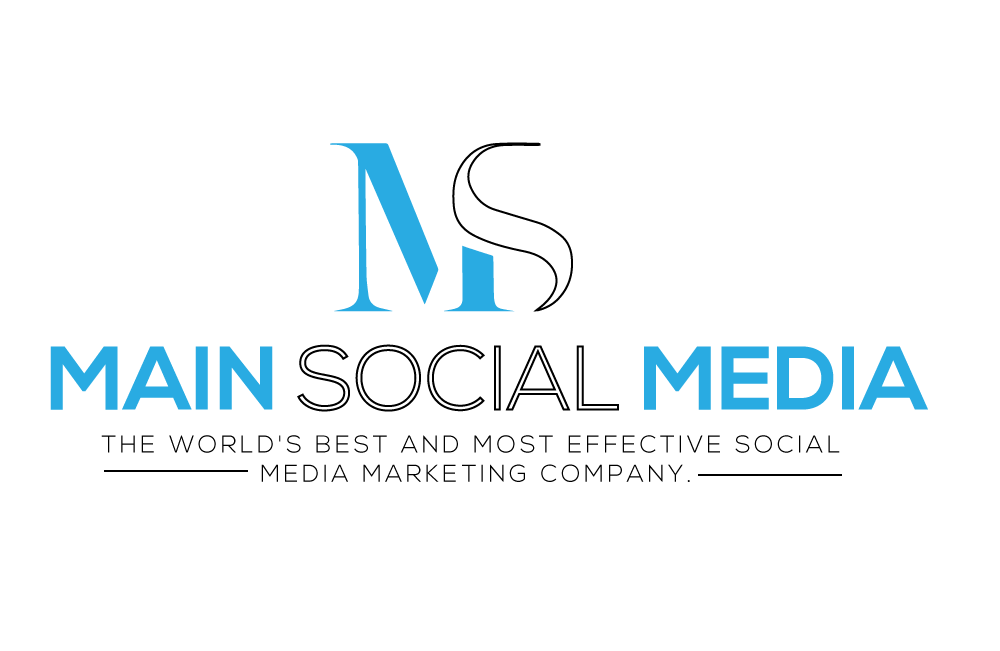
Guerilla Marketing: Strategies that Can Drive Your Business’s Growth
Every business carefully considers how diverse its products are and how it can advertise them. That said, marketers often work to maximize their reach across all market sectors. One of the methods they frequently still employ is traditional advertising techniques such as promotion through TV, radio, direct mail, SMS-blasting, announcements, and other methods. However, traditional marketing isn’t as effective as it used to be. Right now, the promotional technique that is regarded to be adequate focuses on creativity and unconventionality. A fitting example is guerilla marketing. Before we dive into how guerilla marketing can drive your business’s growth, here are the basic concepts you need to know about it.
What is Guerilla Marketing?
The practice of guerilla marketing involves promoting a product or brand via unconventional methods. Guerrilla marketing campaigns can be run by brands either online, offline, or a combination of the two.
Given that guerilla marketing is a low-cost advertising method, budget-conscious companies frequently employ it. Guerilla marketing is used by these companies because they still want their advertising to influence the public. However, guerilla marketing requires exceptional originality to be effective because these campaigns may quickly become viral and enhance your brand.
Guerilla marketing is different from typical marketing because it is funny, controversial, and heavily dependent on interpersonal connections. Guerilla marketing targets current clients to expand their involvement with the good or service. They are simpler to spot and more likely to tell their friends about the event.
Guerilla vs Gorilla
In the business world, the terms "guerilla" and "gorilla" are often confused with one another. As explained, "guerilla" refers to guerilla marketing, an unconventional marketing method. Meanwhile, "gorilla" refers to a company that dominates its industry. However, it does not necessarily mean they have a full monopoly.
A gorilla company gains industry domination by exercising control over the cost and accessibility of its products in comparison to other companies. This impact on pricing drives rivals to use various strategies to compete by offering something unique or using aggressive marketing techniques.
Microsoft is a prime example of a gorilla company, as it dominated the operating systems market back in the 1990s. While it wasn't the sole supplier, Microsoft's rivals were quite small, held negligible market shares, and typically shied away from competing directly with them. Hence, Microsoft was able to significantly outspend these smaller businesses on marketing and innovation, and it utilized this advantage to pressure its rivals on pricing and distribution.
Benefits of Being a Gorilla Company
Being a gorilla company has a lot of advantages.
Gorilla companies can profit from larger margins because of economies of scale, which enables them to expand their operation and gain an edge over rivals. As the market leader, gorilla companies can raise the bar for what consumers demand from their supplier's thanks to the broader marketing platform provided by the dominant position.
Moreover, corporate partners love collaborating with gorilla companies because they can offer significant distribution and endorsement advantages. Due to their size and status, gorilla companies can draw the best talent in their field. Compared to their rivals, gorilla companies can generate money more quickly and inexpensively.
Types of Guerilla Marketing
Now that we’ve established the difference between the terms “guerilla” and “gorilla”, let’s move on to the types of guerilla marketing.
Ambient Guerilla Marketing
Ambient guerilla marketing is one of the most popular and participatory types of guerilla marketing. It entails putting advertisements in unexpected locations where people often wouldn't expect to see them. In this way, onlookers are prompted to pause and reflect on what they see.
An example of ambient guerilla marketing is Iris, London's anti-smoking campaign. In some books, the company inserted a page that says, "THE END. If you smoke, statistically, your narrative will end 15% earlier than it should," and then there's a hotline to help you stop. This was a strong message delivered in an unusual method that not only cut short your reading and caused you to stop prematurely but also reminded you of smoking's negative consequences.
Ambush Guerilla Marketing
In contrast to other types of guerilla marketing, event ambush guerilla marketing is the practice of using an event's audience to promote your company's goods or services. This guerilla marketing tactic provides a memorable event and grants your brand access to the target market of the rival. For instance, you may provide winners or spectators with worthwhile rewards if your rival sponsors a local sporting event. With this maneuver, you may fully profit from your opponent's activities. However, because sponsors of events frequently have legally-binding contracts with event organizers, it could result in legal issues.
Undercover Guerilla Marketing
In contrast to the other types of guerilla marketing, undercover guerilla marketing entails making a hidden sales pitch to a potential client. This guerilla marketing tactic aims to surround the product with buzz and build a community around it.
The most well-known instance of undercover guerilla marketing is product placement in motion pictures or television programs. Meanwhile, some marketers choose to be more inventive. Sony Ericsson, for example, employed actors to portray tourists. They requested that locals on the street shoot their pictures using Sony Ericsson phones.
Street Guerilla Marketing
One of the common types of guerilla marketing is street marketing. Another name for this type of guerilla marketing is "outdoor guerilla marketing," as it alludes to marketing activities that involve street aspects and are carried out outside. Street guerrilla marketing involves signs, flyers, stickers, and street art to reach more people.
Street art is used in some of the most effective street guerilla marketing campaigns to make a point. McDonalds, for example, created a crossing in the image of their tasty French fries. Another excellent illustration is the 2017 street guerilla marketing for the horror film IT. A few days before its release, red balloons with the phrase "It is closer than you think" emerged across Sydney's drainage gates. The red balloon attached to the drain alludes to the famous moment in the movie where we first see the antagonist, Pennywise. Social media users shared this creative street guerilla marketing, which significantly raised the number of people who saw the movie teaser. This guerilla marketing tactic wasn't only interesting to look at; it was also clever, effective, and affordable.
Experiential Guerilla Marketing
What sets experiential guerilla marketing apart from the other types of guerilla marketing is that it creates a memorable situation that the audience can get into and, therefore, allow them to connect with something that symbolizes your business. Campaigns for experiential guerilla marketing are designed to build a strong connection between your business and potential clients. The most apparent strategy is to host or support an occasion, such as a conference, fair, or other gatherings. But you may also take a more original and creative approach.
Volkswagen, a significant automaker, saw great success with its iconic interactive piano campaign. There is no connection between pianos and vehicles. But Volkswagen employed this guerilla marketing tactic to raise awareness of its environmentally friendly products. With the campaign, they also demonstrated how people might readily alter their routines with the correct encouragement.
How Guerilla Marketing Can Drive Your Business’ Growth
After having gone through the types of guerilla marketing, you may be thinking that those are fun and all but don’t exactly see how those could benefit your business. Well, we listed down three main benefits of guerilla marketing.
Builds Brand Awareness
Guerrilla marketing initiatives often operate on a small marketing budget and mainly depend on unusual techniques to reach consumers. However, they’re as effective as any marketing strategy as their unconventionality piques curiosity and creates buzz around your brand. That said, implementing a guerilla marketing tactic is an economical approach to raising brand awareness.
Provides an Opportunity to Go Viral
A lasting impression can be captured by consumers and spread around the world thanks to technology and the internet. That said, guerilla marketing campaigns have a good chance of going viral and being seen by millions due to their creative nature.
Fosters Brand Recall
Guerilla marketing campaigns are distinctive, out-of-the-box, and have a history of influencing customers. Customers who experience a successful guerilla marketing campaign are left astonished, intrigued, and curious about your product and/or service. That said, a guerilla marketing tactic aids in fostering brand recall.
Set Up a Guerilla Marketing Campaign for Your Business
To see the benefits of guerilla marketing, you must have a well-thought-out marketing plan.
Know Your Audience
Understanding your audience is essential to the success of any guerilla marketing campaign. You must know your audience's aspirations, concerns, and pain spots to elicit emotions with your guerilla marketing campaign.
Investigate your present customers to find out more about your target demographic. Your sales and customer service teams can provide information on who your customers are, why they value your good or service, and what motivates them. Create a client profile to keep the data accessible.
Define SMART Goals
Guerrilla marketing frequently seeks to raise brand recognition and generate buzz. You could also leverage your efforts to boost sales. Make sure the target of your campaign aligns with your overall business goals.
The greatest approach to establishing KPIs for your guerilla marketing campaign is leaning on prior outcomes. But if you're just getting started, benchmark your objectives against your rivals.
Keep Up with Trends
Discover the current trends in your industry. Social listening tools will be useful in this situation. For example, you could use Google Trends, a program that examines the popularity of top search searches. Moreover, you could learn more about your rivals and examine current events and trends. Look for and study some of their guerilla marketing campaign examples.
Brainstorm Guerilla Marketing Tactics
Bring your coworkers together and suggest that they come up with some suggestions. Set a session's time restrictions and ensure everyone clearly states their recommendations. Put the thoughts together and evaluate them. Count on your company's objectives, current trends, and the preferences and problems of your consumers to guide you. Moreover, consider the tools and budget you have at your disposal to make the notion a reality.
Execute Your Guerilla Marketing Campaign
Before launching your campaign, give it one last close examination to prevent failure. Consider how clients could interpret your message and respond. Try to identify any potential drawbacks and forecast how they will affect the campaign as a whole. Moreover, remember that there is always a risk that nothing will work out. You should think about it, imagine the worst-case situation, and create a plan B just in case it happens.
Measure Results
You can track the results of your guerilla marketing campaign by checking for mentions of your brand on media platforms. You could also use listening tools to determine if you hit your guerilla marketing campaign goal. You can also survey your customers and random people to see if your guerilla marketing campaign reached them and, if it did, how did it help them form a perception of your brand. To measure its results, you could also compare your business's sales before and after the guerilla marketing campaign.
As measuring results is complicated without the proper tools, you could ask for the help of a digital marketing agency like Main Social Media. As a digital marketing agency that's experienced in creating and implementing various marketing strategies, Main Social Media will be able to thoroughly conduct an audit of your guerilla marketing campaign, assess its strengths and weaknesses, help you understand it, and recommend strategies to incorporate in the future.
Guerilla Marketing Strategies for your Business’s Campaign
We've selected three effective guerilla marketing strategies that could help you in the creative process of your campaign.
Use Posters and Stickers
Place your business’s custom posters on walls, sidewalks, sculptures, and other public areas. Sticking them to moving items, like public transportation, can also be advantageous. You can also give your customers custom stickers they can show off to others.
Pro Print Press offers custom printing services and can print high-quality custom posters and custom stickers in various sizes. Make your guerilla marketing campaign effective by employing their help for your custom printing needs.
Hand Out Freebies or Samples
People love to receive free stuff. You could hand out these freebies or samples during events, through business partners, or social media giveaways. If you try to take advantage of this guerilla marketing strategy, ensure that what you’re handing out can be valuable to your customers.
Focus on Small Groups
As a guerilla marketing strategy, focusing on small groups helps create a more effective campaign, allowing you to build relationships with your target audience easily.
Guerilla Marketing Ideas
Guerrilla marketing employs out-of-the-box marketing techniques to generate buzz about your product, service, or event. For your own campaign, we’ve compiled a list of great guerilla marketing ideas.
For outdoor guerilla marketing ideas, you could do the following:
- Use drones to advertise
- Fly your banners to the sky
- Broadcast your message through hidden projections
- Set up photo opportunities
- Do extreme publicity stunts
For street guerilla marketing ideas, you could do the following:
- Sidewalk graffiti
- Chalk art
- Bench advertising
- Poem signage
For experiential guerilla marketing ideas, you could do the following:
- Public sensory exhibit
- Escalator advertising
- Publicly shoot TikTok videos
For event guerilla marketing ideas, you could do the following:
- Organize a flash mob
- Create a skit
Other guerilla marketing ideas that you could do are:
- Participate in social awareness campaigns
- Do season and holiday modifications for your brand
- Create product bundles
You might also like





